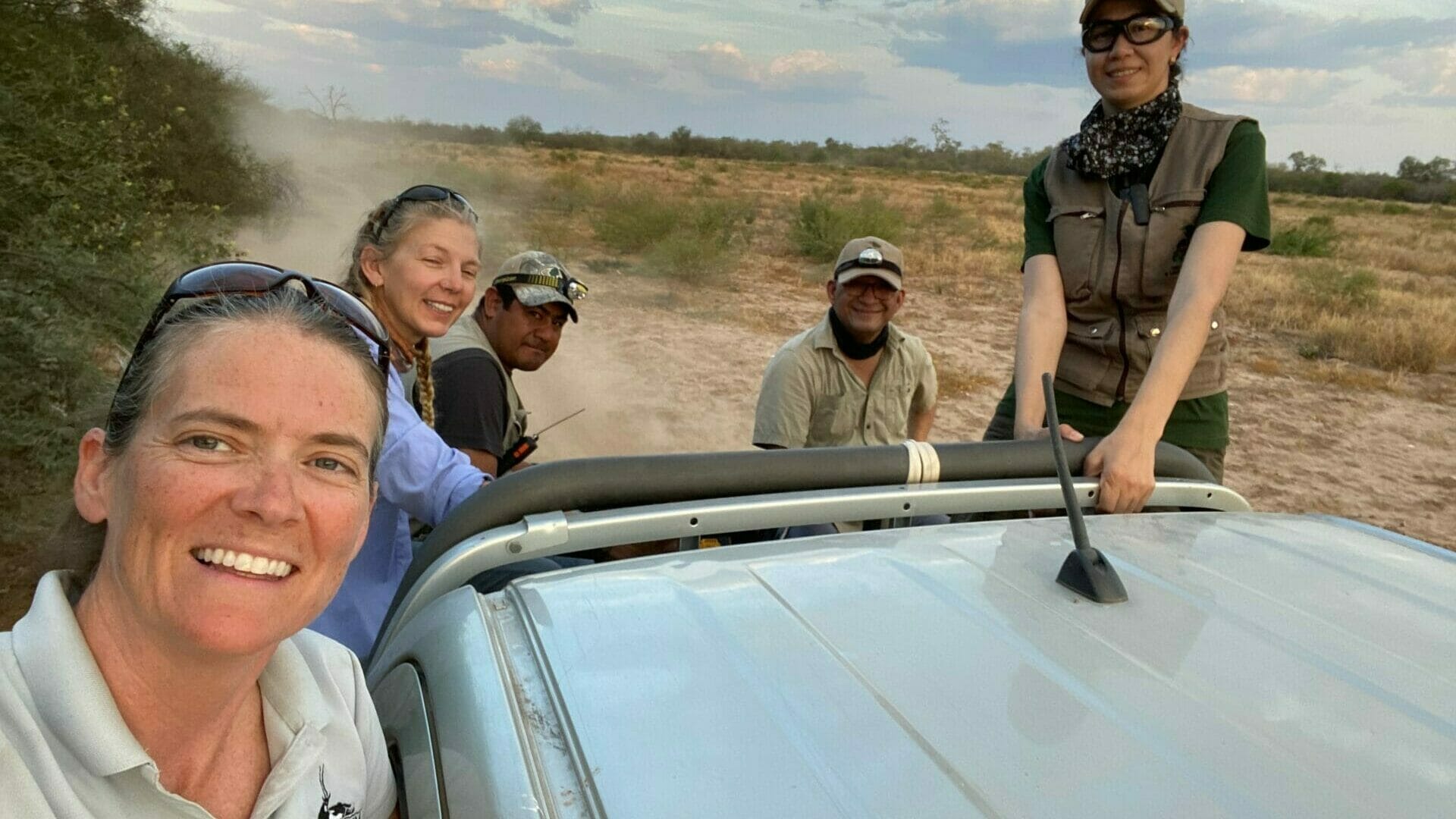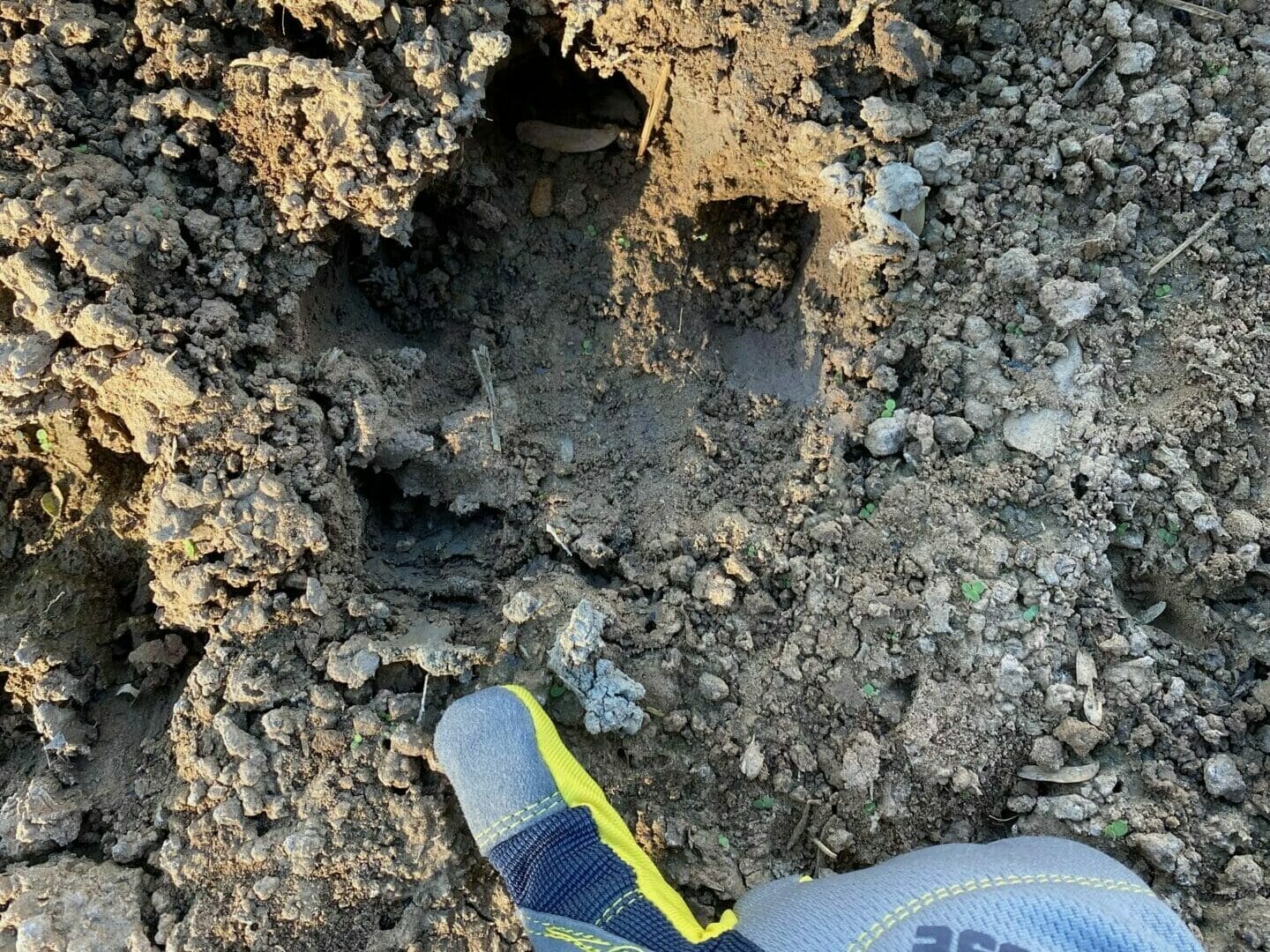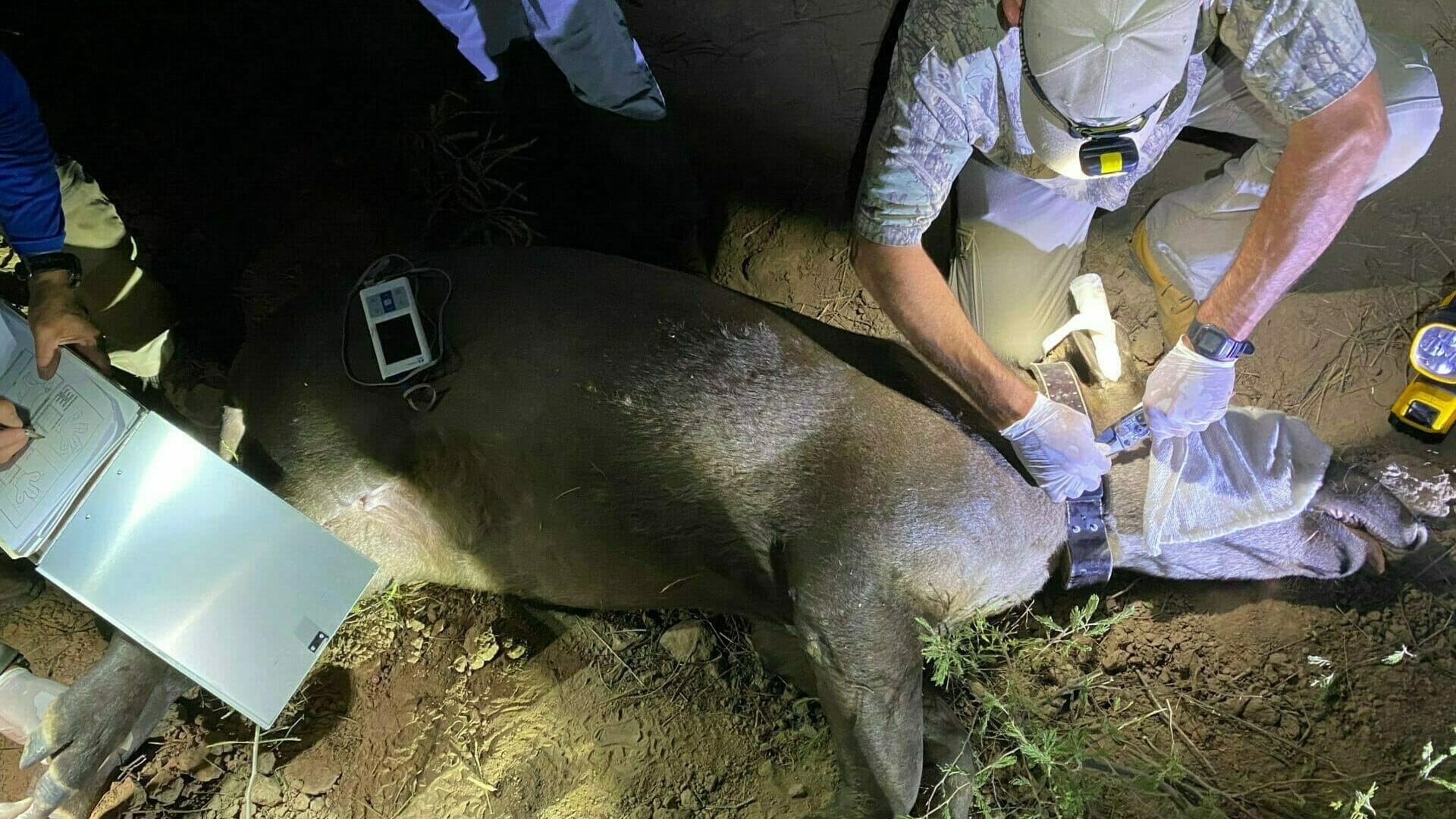At the end of 2022, two of our personnel were once again called out to be a part of a team conducting research, this time in South America. Dr. Julie Swenson, our associate veterinarian and Paige McNickle, former curator of hoofstock and rhinos, traveled to Paraguay to spend two weeks with the Chaco Center for Conservation and Research. The mission was to trap and fit tapirs with radio tracking collars, as well as collect other health data. Multiple institutions willingly participated, resulting in several teams that went down to help the researchers already on the ground in Paraguay.
This isn’t the first time Fossil Rim has been part of a study involving radio collars and other tech. In fact, we are often engaging with new technology and testing its efficacy both at home and in the field. A great example of this was when our herd of scimitar horned oryx were fitted for tracking collars to test the impact the device had on natural behaviors before they were placed on wild members of the species. This time, our team came back with unique insights into the tools needed to study wild animals.

Step One: Locating and Trapping
When studying wild animals, researchers may choose to interact with an individual based on what they’re trying to learn. In this case, rather than observing tapirs from a distance, the team needed to trap and sedate them to gather health data and apply a collar. Typically, there are five ways you can accomplish this. Baiting, pit traps, dog chases, darting from a vehicle, or darting from a blind.
Baiting is what you’d expect, luring an animal into an enclosed space using food. Pit traps work when an animal walks atop a thin covering to a pit, and falls a very short distance into the hole. Although these two methods have worked well in other places, neither was thought to have a high success rate in the Paraguayan Chaco. The tapirs hadn’t shown much interest in baits, and would likely simply walk around any set pit traps. The team also opted against cornering tapirs with specially trained dogs to prevent them from running into hard to reach locations. Instead, the team settled on darting. This method is used here at Fossil Rim, and is a great way to deliver anesthesia quickly to an animal without causing them unnecessary stress.
Dr. Julie recalls how the team spent hours each morning and evening waiting around in blinds for a tapir to walk by, or scouring the scrublands with flashlights looking for their tell-tale red eyeshine. Tapirs are quick, and good at navigating their dense surroundings. Typically, the only time they would wander into the open was when they were on their way to get a drink, meaning that the team had to act fast. That’s where the first piece of tech comes in.

The Science of Darting
When we dart animals at Fossil Rim, they tend to stay within a few feet from where they were darted before the anesthesia takes over. For the wild tapirs, their constant alertness made them extremely skittish, and a dart would almost always result in the animal running for cover. To help researchers locate the animals within the dense brush, the team used a special telemetry dart fitted with a radio transmitter that could be followed using GPS. Unfortunately, despite the promising claims of the tech, they were less than reliable in practice. It wasn’t uncommon for the dart to work in terms of sedation, but not in terms of tracking. Luckily, the team was still able to find all of the darted individuals and collar them before they could get lost in the brush.
Step Two: Collaring
Once the tapir was safely sedated, it was time for the team to move in. They took samples of things like blood and stool to test later, and fit the animal with a tracking collar that had both GPS and radio telemetry capabilities. Tracking collars and other tracking devices in general are very common in the world of conservation research. They allow scientists to keep tabs on individuals and collect data while causing little to no interference in the animal’s daily life. In Paraguay, the GPS locations from the collars could only be downloaded every few days. This meant that the team had to rely on other tech in conjunction, like game cameras and radio telemetry.
The Basics of Collars
In addition to sending movement data, these collars are also set to send out what’s known as a “mortality signal” if the device hasn’t been moved after a certain amount of time. While this is usually a bad sign, the team got quite the surprise when a mortality signal from a newly placed collar turned out to be nothing more than a false alarm after a female had found a way to slip the device off and leave it in the brush. Creating a tight but comfortable fit on a tapir proved slightly difficult, as tapirs have a rather unique neck shape.

Luckily, these collars are fit with both a set and manual release. This means that after a certain amount of time, it will automatically remove itself. If the tapir grows faster than expected or needs the collar removed for some other reason, the manual release allows a researcher to remotely trigger the collar to open and fall from an animal. The animal’s health is the first and foremost concern of the researchers, meaning that they work to ensure the collars do not impede the growth or development of any individual.
Step Three: Keeping Tabs
After the hard work of trapping and collaring is done, it’s time for the data to start rolling in. Of course, this is typically a slow process, and one that isn’t always guaranteed. Sometimes tech fails, collars fall off, or something else happens to impede the research process. For now, the researchers still working in Paraguay are monitoring the health and movement of the tapirs that were caught, and blood and other health samples are being tested. The insights that all of this will give is vital to the conservation of tapirs within this specific region, and can help individuals and governments make better decisions when it comes to developing land. Not only this, but monitoring the health of one species can give us insights into entire ecosystems, and how they are changing.
Our guests won’t be seeing any tapirs on property here in Texas, but this trip is yet another example of the far reaching talents of our staff, and how every conservationist has something to lend to the cause. We look forward to future opportunities both at home and abroad, and the insights we will be able to provide and bring back to Fossil Rim.
